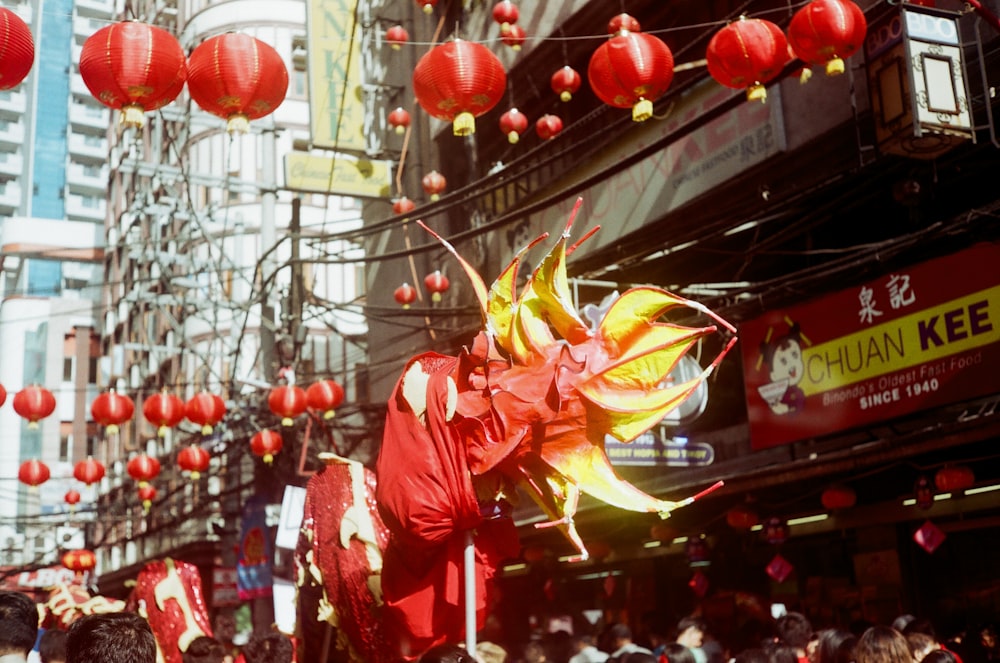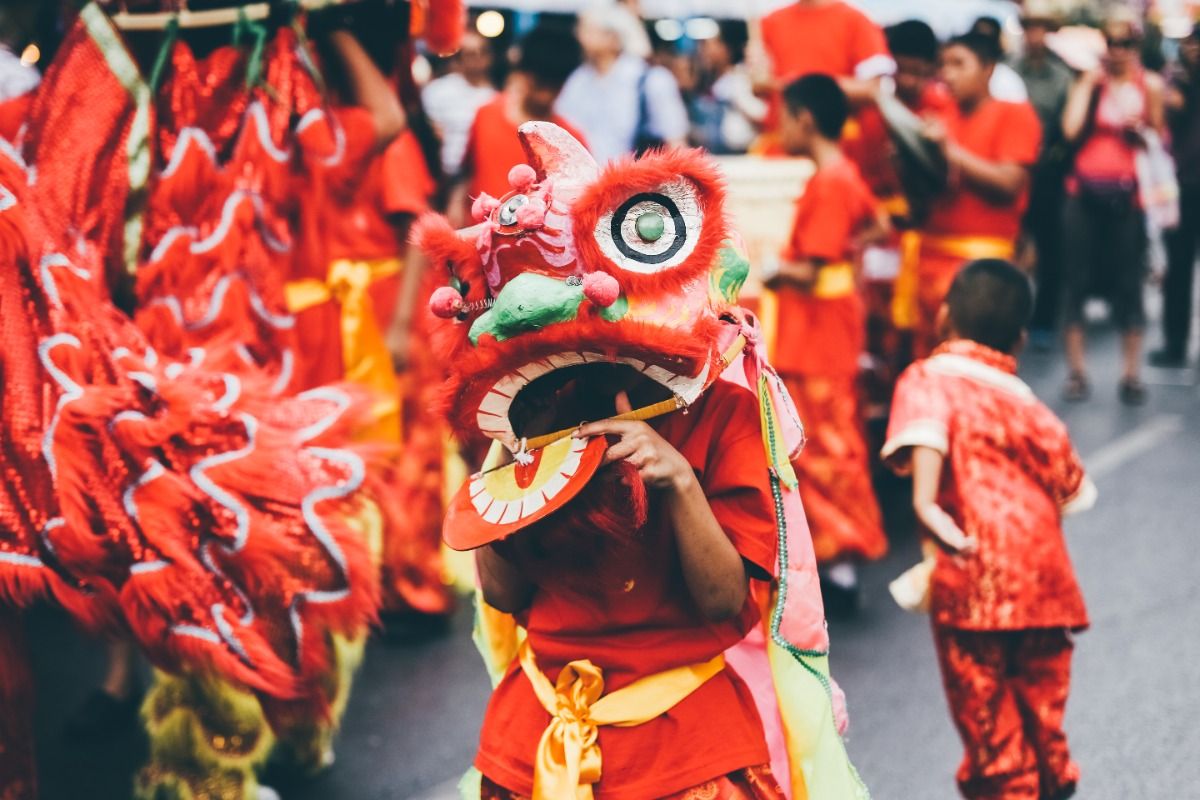
Chinese New Year traditions are some of the most beloved annual traditions for many people. Chinese New Year or Lunar New Year (known in Chinese as 春节- direct translation Spring Festival), is celebrated by many Asian communities all around the world. From fireworks, quirky traditions, extravagant displays of red-colored Chinese New Year decorations, to scrumptious Chinese dishes, this holiday is a feast for the senses.
Lunar New Year typically falls on the second new moon after the winter solstice, meaning that the date of Chinese New Year will change from year to year. This year, Lunar New Year falls on Tuesday, February 1, 2022. This is both a holiday and a festival, and it’s celebrated for up to 16 days, with preparations starting half a month before Chinese New Year’s Eve (which is January 31st, 2022 this year). To prepare you for the upcoming festivities of Chinese New Year, this article will tell the story of how this holiday came about as well as spotlight some of the most beloved Chinese New Year traditions.
The Origin of Chinese New Year
According to Chinese folklore, there was a monstrous creature called Nian (年). Every 365 days, he would come out of his lair and terrorize villages. The monster would devour everything in its path from little animals to humans and once sated, return to the forest. To protect themselves, the villagers prepared extravagant feasts and prayed to their ancestors for protection. Besides that, the villagers devised plans to try to intimidate the Nian. The sound of firecrackers was used to scare away the Nian and houses were decorated with bright red decorations to blind the Nian. These acts successfully scared away Nian and soon became a yearly tradition during the Spring Festival.

Popular Chinese New Year Traditions
Lunar New Year is a time to start the year with a fresh, clean slate, and welcome the fortune and happiness the new year brings. Below are some popular Chinese New Year traditions almost every Chinese household performs to welcome the New Year:
1. House Cleaning
Chinese people carry out ‘winter-cleaning’ of their houses. The act of throwing away old things and ” sweeping away the dust” symbolize the farewell to the old year and embracing the new year.
2. New Year Shopping
Out with the old, in with the new! Chinese people are thrifty most of the time, however, they spend generously during this period. Popular items that people buy are new clothes, decorations, foods and snacks.
3. Putting Up New Year’s Decorations
Red symbolizes happiness and good fortune in Chinese culture. As a result, houses are decorated with red lanterns, red spring couplets, paper cuttings and New Year’s paintings. These decorations are thought to ward off evil spirits. The decorations often correspond to the Chinese zodiac. 2022 is the Year of the Tiger. As a result, you may notice more tigers on decorations this year.

4. Offering Food Sacrifices to Ancestors
In Chinese culture, it is believed that ancestral spirits protect their descendants. As a gesture of respect, the descendants pray to their ancestors and lay out platters of food in front of their ancestors’ shrine to let their ancestors “eat first”.
5. Family Reunion Dinner
Chinese New Year’s eve is the only time of the year when all family members reunite with each other. Family members take this time to catch up with each other and renew their familial bond. The big family dinner is one of the most common Chinese New Year traditions.
6. Giving Red Envelopes
Parents gift children red envelopes and wish them affirmations such as health and good studies. Red is a symbol of good luck, hence money from red envelopes are called lucky money.
7. Lighting Firecrackers
On New Year’s Eve, it is common to watch the fireworks from 0:00 to 0:30 and even later. Fireworks start to fly at 0:00 (midnight), which symbolize the coming of the new year. It is believed that the louder the firecrackers, the more prosperous your year will be.

8. Watching Lion/Dragon Dances
Lion and Dragon dances are popular Chinese New Year traditions. These traditional dances are accompanied by rhythmic drums and banging of the cymbals. It is a symbol of good luck and fortune and is believed to ward off evil spirits.
Chinese New Year Taboos
Spring Festival is a time to welcome the New Year, however, there are plenty of strict rules to abide by. Here are the top 5 things to avoid doing during Chinese New Year:
1. Do Not Use Scissors, Knives or Sharp Objects
Scissors or sharp objects are believed to cut the stream of your wealth and success. Get your hair cut after the Lunar New Year!
2. Do Not Clean or Sweep During Lunar New Year Day
Before the Spring Festival, there is a day allocated to cleaning. However, cleaning or sweeping during the Lunar New Year is taboo as it is believed that you might sweep away your good luck and fortune instead.
3. Do Not Repeat Negative Affirmations
Do not say anything negative. This is taboo on Chinese New Year due to the fear of jinxing yourself and bringing bad luck to you and your loved ones.

4. Do Not Break Ceramics/Glasses
If you break something, it may translate to you breaking your good luck and fortune. However, if these accidents do happen, wrap it in red paper and whisper auspicious phrases to make your luck better.
5. Avoid Quarrels and Crying
Avoiding arguments and keeping peace is paramount. This is to ensure a smooth and auspicious year ahead.
Lunar New Year Covid Precautions
The ongoing pandemic and travel restrictions mean that we may not be able to be physically present to celebrate the Lunar New Year with our loved ones. Most of us might have unconventional methods such as Zoom or FaceTime dinners. Is pandemic anxiety getting to your loved ones? Gift your friends and loved ones a Circle HealthPod portable Covid testing device, so they can get tested for Covid from the comfort of their own home.







Comments are closed.